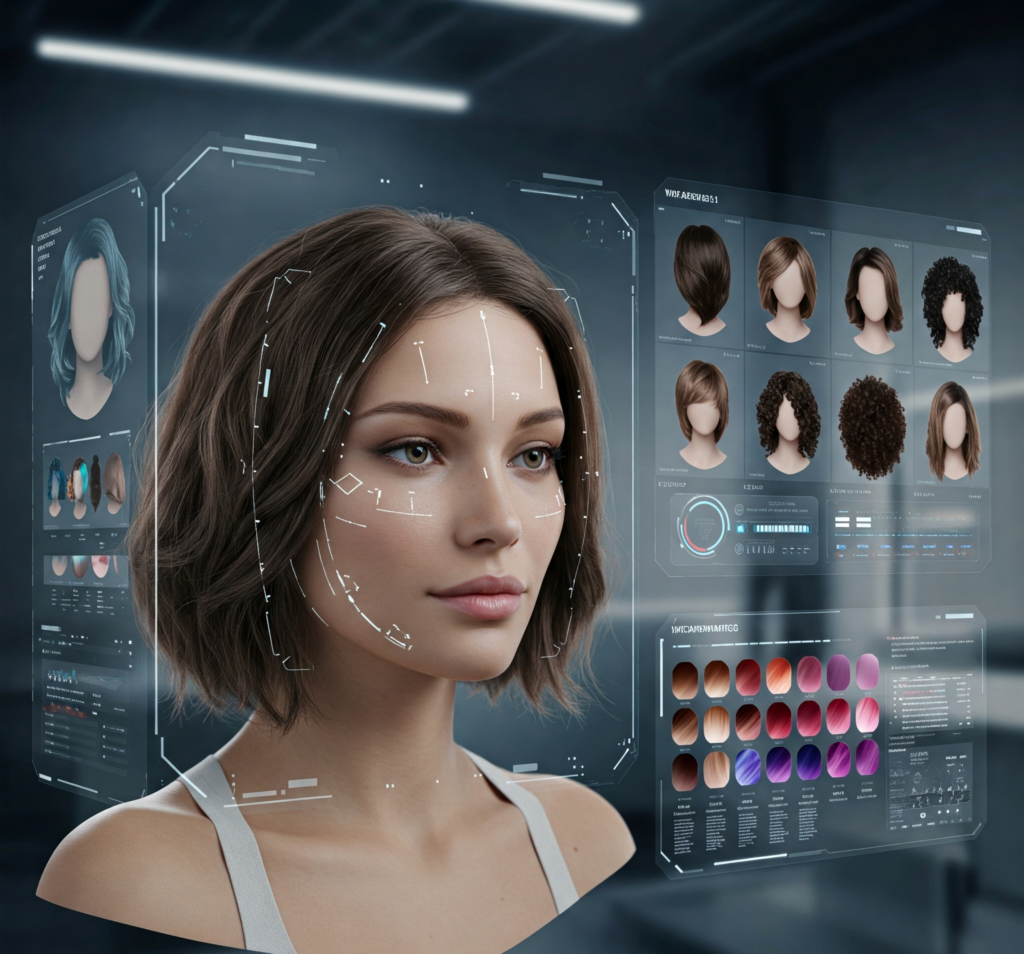The beauty industry is undergoing a high-tech transformation, and wigs are right at the forefront—thanks to artificial intelligence. From personalized wig fittings to predictive style recommendations, AI is changing the way wigs are designed, made, and worn across the United States. In 2025, custom wig design isn’t just about measurements and colors—it’s about data-driven perfection.
Let’s dive into how AI is revolutionizing the custom wig experience, making it more accurate, inclusive, and empowering than ever before.
1. Personalized Wig Fittings Using Facial Recognition
Gone are the days of trial-and-error wig shopping. With AI-powered facial recognition tools, wig designers can scan a customer’s face shape, bone structure, and hairline to suggest the best wig styles. This technology makes online wig consultations more precise, even from thousands of miles away.
Why it matters:
Customers get a wig tailored not only to their measurements but also to their unique features—leading to a more natural, flattering look without guesswork.
2. AI-Generated Wig Style Recommendations
AI tools are now capable of analyzing personal style data—like your social media photos, shopping habits, and even makeup preferences—to recommend wig colors, lengths, and textures. Think of it like having a digital stylist who knows your taste inside and out.
Bonus: Some wig retailers are even using AI chatbots to guide customers through style quizzes and offer instant product matches based on face shape, lifestyle, and fashion sense.
3. Faster Custom Wig Production Through Machine Learning
Traditionally, crafting a custom wig was a time-consuming process that involved manual measurements, hand-tying, and multiple fittings. With AI and machine learning, wig manufacturers can now automate many steps, reducing wait times and improving consistency.
Result: Faster delivery, lower production costs, and better-fitting wigs made to order.
4. Smart Color Matching and Skin Tone Analysis
AI-powered tools can scan your skin tone and undertones to recommend the most complementary wig colors. Whether you’re choosing between warm honey blondes or cool ash browns, these algorithms help you find shades that enhance your natural beauty.
Use case: Virtual try-on apps that show how a wig color will look against your skin—before you even buy it.
5. 3D Wig Modeling and Virtual Try-Ons
Thanks to AI and augmented reality (AR), shoppers can now “try on” wigs virtually using their phone or computer camera. The software maps the wig to your face in real-time, letting you view different styles, lengths, and colors from multiple angles.
Game-changer: This eliminates the uncertainty of online wig shopping and helps users feel more confident in their purchase decisions.
6. Inclusive and Diverse Wig Design
AI is helping brands expand their range by learning from vast datasets that include people of all ethnicities, hair types, and styles. This has led to more diverse textures, curl patterns, and cap sizes that truly reflect the real-world diversity of wig wearers in the U.S.
Impact: More people than ever feel represented and catered to in the wig industry.
Final Thoughts
Artificial intelligence is not just a trend—it’s the future of custom wig design. By combining data, design, and personalization, AI is making wigs more accessible, stylish, and inclusive for everyone. Whether you’re a fashion-forward wig lover or a first-time buyer, AI ensures that your next wig is a perfect fit—in every sense of the word.
Embrace the future. Let your wig be smart, stylish, and uniquely you.


